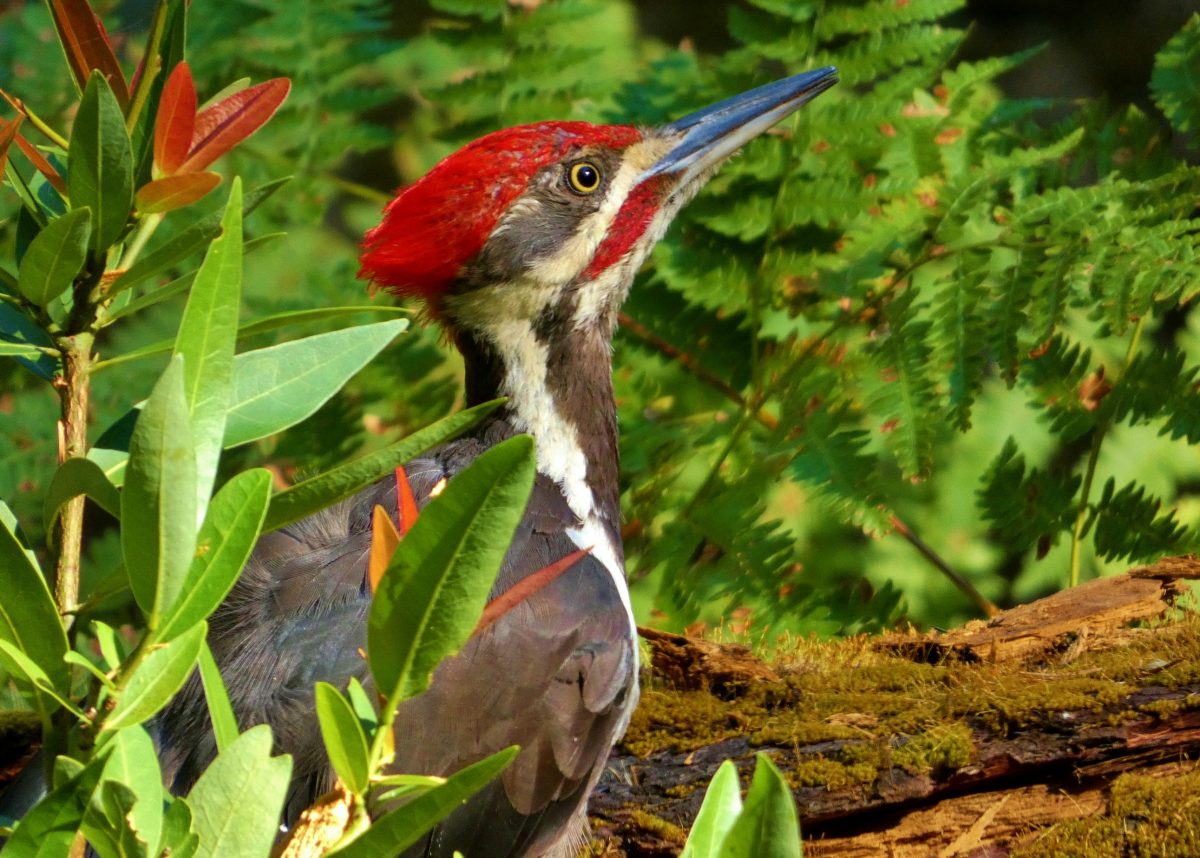Woodpeckers can be found across the globe except for the polar regions and (bizarrely) Australasia. It is an iconic bird with its often stunning plumage and hammering noise. Woodpeckers belong to the Picadae family, within which there are 33 genera and 233 species. In the United States, there are 8 genera. Each one has different characteristics, and there is a surprising total of 24 species.
We will look at each family and choose 1-2 species from each to demonstrate its qualities
Melanerpes
Members of the Family
- Red-bellied Woodpecker
- Red-headed Woodpecker
- Golden-fronted Woodpecker
- Gila Woodpecker
- Acorn Woodpecker
- Lewis’s Woodpecker
Red-bellied Woodpecker (Melanerpes carolinus)


As is often the case, this bird is not accurately named. It has an attractive black and white pattern on the back and buff on the front. A bright red crest helps more with the identification than the ‘red belly’ that is only slightly marked and not usually seen.


This woodpecker is a southeastern bird and can be seen year-round as it does not migrate. It can be seen in a number of different environments, and its success in adapting makes it one of the most common woodpeckers seen in the U.S.
It is an opportunistic feeder and will eat the usual nuts and berries but also arthropods and small vertebrates.
Acorn Woodpecker (Melanerpes formicivorus)


Less known than the eastern woodpecker, the Acorn Woodpecker has an unusual pattern with black eye patches. The bird is black on the back and white on the front, blending to black on the breast. A golden throat and face are complemented by a bright red crest.


The Acorn Woodpecker is another non-migratory woodpecker that is resident in the southwest and west coast. It is also found throughout Central America and the north of South America.
As the name suggests, this woodpecker just loves acorns! However, it actually has quite a wide-ranging diet, including insects, sap, some birds, lizards, and small mammals.
Dryobates
Members of the Family
- Downy Woodpecker
- Hairy Woodpecker
- Red-cockaded Woodpecker
- Ladder-backed Woodpecker
- Nuttall’s Woodpecker
- White-headed Woodpecker
- Arizona Woodpecker
Arizona Woodpecker (Dryobates arizonae)


This female Arizona Woodpecker is an attractive blend of browns and creams. The solid back gives way to a paler, patterned underside and the head is again patterned. The male is similar but the markings are darker and more striking. He also has a red crest.


Another misnomer: this woodpecker is more common in Mexico and is rarely seen in south Arizona. Where found, it is resident and seen all year round.
The Arizona Woodpecker digs through bark looking for insects and their larvae to eat.
Downy Woodpecker (Dryobates pubescens)


The Downy Woodpecker is the smallest and most common woodpecker across the U.S. Its black back is split by a long white patch and white patterns on the wings. Black and white patterning on the face is accentuated by the red crest.


The Downy Woodpecker can be found across continental America in all environments except for the very dry southern areas.
It digs through the bark of trees looking for insects but will also eat fruits and seeds.
Dryocopus
Members of the Family
Pileated Woodpecker (Dryocopus pileatus)


The Pileated Woodpecker may be the only member of its genus, but it has the iconic woodpecker look. The mainly black body has white vents along the side and running up the neck and onto the face. The kicker is the bright red crest, which really makes this bird stand out.


As can be seen in the range map above, the Pileated Woodpecker is resident and non-migratory in eastern and northwestern America.
This woodpecker, similar to others, eats ants, fruits and nuts.
Picoides
Members of the Family
- Black-backed Woodpecker
- American Three-toed Woodpecker
American Three-toed Woodpecker (Picoides dorsalis)


This is a small and uncommon woodpecker with more white on the body than other species. The male, as pictured above, has a golden crown.


The American Three-toed Woodpecker is an uncommon find in woods and forest of the mid and north west.
This woodpecker loves the larvae of the bark and wood-boring beetles.
Dendrocopos
Members of the Family
Great Spotted Woodpecker (Dendrocopos major)


This is a common woodpecker of Europe and across Eurasia. It is the expected black and white colors with a red vent and crest.


With less than 20 sightings in Alaska, this is an incredibly rare woodpecker in the United States.
Campephilus
Members of the Family
Ivory-billed Woodpecker (Campephilus principalis)


The Ivory-billed Woodpecker is the holy Grail of bird watching. It is considered extinct by many people but still people go from Texas to Florida looking for it. In parts of ancient forests you can still see their excavated holes, which is probably the closest any of us will come to seeing them.
Here is an unconfirmed call recorded in Louisiana in 2022.
Sphyrapicus
Members of the Family
- Yellow-bellied Sapsucker
- Red-breasted Sapsucker
- Red-naped Sapsucker
- Williamson’s Sapsucker
Red-breasted Sapsucker (Sphyrapicus ruber)


The Red-breasted Sapsucker is a striking crimson on the head and neck before reverting to ‘traditional’ woodpecker black and white coloring.


The Red-breasted Sapsucker is the first of the woodpeckers on our list that is migratory. It moves only a short way to further inland for breeding.
As the name suggests, the sapsucker’s diet consists largely of sap. However, it will also take fruit and arthropods.
Williamson’s Sapsucker (Sphyrapicus thyroideus)


Another dark, large woodpecker with a yellow blush on belly. This male also has a red patch on the throat. The female is a duller brown.


The Williamson’s Sapsucker has a complex migration pattern with nonbreeding areas in the southwest and Mexico, breeding areas scattered further north and a streak of year-round territory in California and Oregon.
This sapsucker is omnivorous and as the resident range suggests, its diet is highly variable.
Colaptes
Members of the Family
- Northern Flicker
- Gilded Flicker
Northern Flicker (Colaptes auratus)


An unmistakable pale woodpecker with a beautiful buff breast covered in black spots. The reddy brown throat is marked by a semi-circle of black below. Black blobs run down from the mouth, and there is a red streak at the back of the head.


The Northern Flicker is widespread and resident across continental America with a migratory population south which moved north to breed.
This woodpecker primarily eats ants, fruits and seeds.
Final Thoughts
These woodpeckers are fascinating. I always thought the drumming was to do with hammering away at food but it is all about communicating to potential predators, other woodpeckers, and to prospective mates.
From the common Downy Woodpecker to the mystical Ivory-billed Woodpecker, there is a lot to learn and like about these amazing creatures.
Source link

